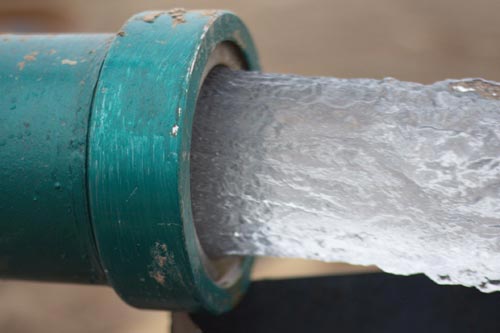(Headline USA) Around the country, utilities have been leaving lead pipe in the ground even when it is easiest to remove during water main work, and this practice is permitted by the EPA.
Worse, the companies have been removing sections, disturbing the pipe and leaving the rest, which can spike lead levels, causing harm that will last a lifetime, an investigation by The Associated Press has found.
Leaving lead pipe behind should have stopped a long time ago, said Yanna Lambrinidou, a medical anthropologist at Virginia Tech and co-founder of the Campaign for Lead Free Water. The metal is especially dangerous for young children. It can lower IQ and deprive kids of problem-solving skills. The Environmental Protection Agency says no amount is safe for kids. Utilities, she said, have tried to reduce costs and dodge responsibility.
“I can’t but think of partial replacements as immoral because they involve a witting decision by government agencies to leave residents at continued risk of exposure,” said Lambrinidou.
The sections that remain can poison tap water until they’re removed.
Many cities say they can leave the pipes and use chemical treatment instead. But that isn’t foolproof.
Even some cities that are committed to taking out lead pipe say they have too few resources.
Decades after the dangers of lead became clear, utility companies have been leaving lead pipe in the ground. Experts say it has likely happened hundreds of thousands of times.
It has occurred in Providence, Chicago and other places. It continues today in Oklahoma City, in Allentown, Pennsylvania, Nashville and Memphis, Tennessee, and St. Louis.
Recently, more money and attention to the danger of lead pipes has prompted some to stop the practice. Still, it remains legal.
The Environmental Protection Agency first set limits on lead in drinking water in 1991, requiring utilities, with some exceptions, to replace entire lengths of lead pipe when water exceeded those limits.
But the American Water Works Association, a group that represents utilities, challenged that replacement requirement, saying it didn’t give the public enough chance to weigh in. A federal appeals court in 1994 agreed.
The EPA then “completely caved,” and didn’t reissue the provision, said Erik Olson, an attorney on the case with the Natural Resources Defense Council, leaving only partial replacements required when lead levels are high.
Adapted from reporting by the Associated Press

